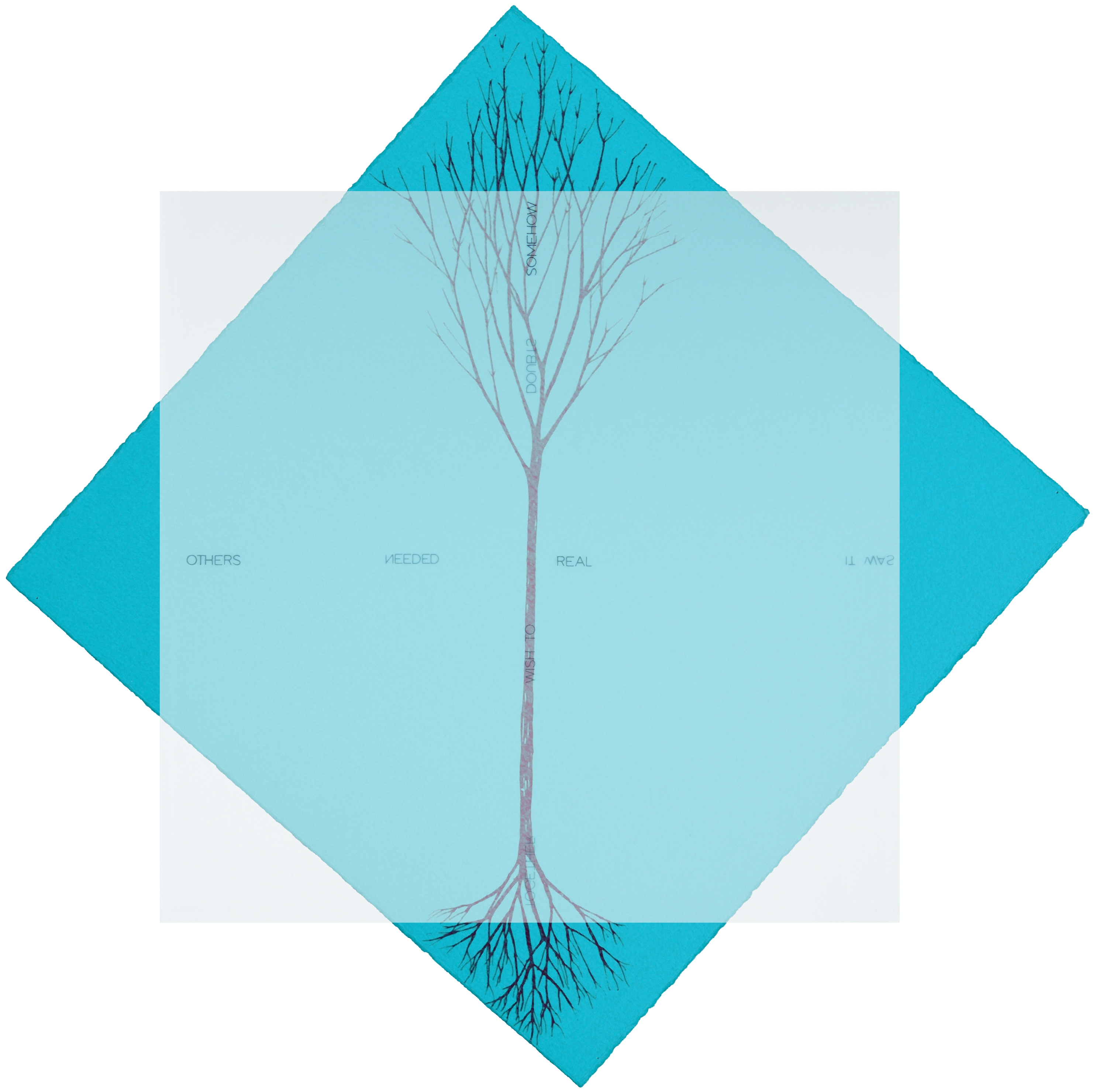Screenprint on parchment/handmade paper (two-part work)
Dimensions: 40 x 40 cm
Signature, inscriptions, markings: signed and dated verso at lower right (on handmade paper)
Copy Number: 3/30
Accession Number: 1001940
The two-part work consists of a blue square cardboard and a likewise square parchment, on which the following words are printed alternately in mirror writing or in the usual spelling: in vertical alignment TOGETHER - WISH TO - DOUBTS - SOMEHOW and in horizontal alignment OTHERS - NEEDED - REAL - IT WAS. On the cardboard, diagonally from top to bottom, is a tree with a thin trunk, branches and exposed roots. It is not quite clear which side represents the root system and which side the crown, since both differ only in volume, but not in representation. The cardboard, turned 45 degrees to a point, is placed diagonally under the parchment so that the words WISH TO and DOUBTS come to rest on the axis of the trunk.
It is now up to the viewer to decide or unravel how the words belong together, in which directions they are to be read, and what they mean. The terms, which at first glance seem to be arbitrarily thrown together, seem to explain the work itself upon closer inspection. One can make an effort to put the puzzle together, yet it does not quite add up; there seem to be several layers. Doubts are awakened. What is more "real" here? The root system or the branches? What is cause, what is effect? What is the meaning of the words? Are they spelled the right way or the wrong way?
Robert Barry confronts the viewer with the relation absence - presence. He succeeds in provoking new insights into the function of linguistic signs and visual forms of representation by setting aside material aspects of his art (parchment and language) and instead allowing the viewer to travel along a new path (trunk) that can lead him in different directions of thought (branches or root system). The blue - as the color of distance - could stand for the freedom of imagination.
"Barry lifts fragments of language out of their syntactical context to use them as visual material. The logical/temporal syntax is replaced by the aesthetic/spatial syntax, language thus freed for another use, a store of signifiers, words lose their univocity and become suggestive signs, in a directly sensual context."1
The present work is a particular example of Barry's conceptual mode of working, insofar as the artist here literally "thwarts" the supposed unambiguity of signifier and signified, signified and signified.
Melanie Bollmann
1 Franz Kaiser, Fragments of language as visual material, in: exhib. cat. Robert Barry, Haags Gemeentemuseum, Den Haag 1990, p. 20.
